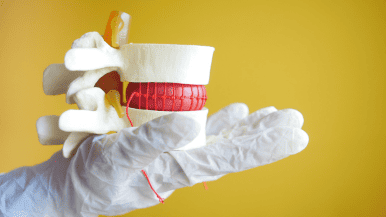 Rotator cuff tears are among the most frequent causes of shoulder pain and disability, impacting over two million people every year.
Rotator cuff tears are among the most frequent causes of shoulder pain and disability, impacting over two million people every year.
A torn rotator cuff directly alters the shoulder and can make the most routine tasks such as bathing, reaching overhead, and sweeping the floor difficult and painful. A rotator cuff is a group of muscles and tendons that surround the shoulder joint, keeping the head of your upper arm bone firmly within the shallow socket of the shoulder.
A tear to one of the rotator cuff tendons can cause intense pain, a decrease in range of motion and instability in the shoulder. Moreover, a lubrication-filled sac known as a bursa enables the rotator cuff tendons to glide smoothly over one another during arm movement. If the tendons become impaired, the bursa can swell up, cause discomfort, and limit arm mobility.
What Causes Rotator Cuff Tears?
The natural wear and tear of the shoulder joint over the long term, especially in the dominant arm, can lead to a degenerative rotator cuff tear. Other factors leading to common rotator cuff injuries include:
- Repetitive stress: sports with repetitive motions such as baseball, football, or weight lifting can increase the risk of a tear. Manual jobs such as painting, carpentry, and other overhead chores can put additional stress on the shoulder joint and lead to overuse tears.
- Reduced blood supply: tendons need an ample supply of blood to replenish and heal. In older individuals, the rotator cuff tendons receive less and less blood, which can result in tears.
- Trauma: traumatic injuries can also cause tears in the rotator cuff. Lifting a grandchild, placing your luggage in an overhead compartment, falls, and lifting heavy objects can all cause the rotator cuff to tear.
- Bone spurs: over time, bone overgrowths can develop underneath the acromion bone causing impingement and discomfort when raising the arms and lead to a tendon tear.
What Are the Symptoms of a Torn Rotator Cuff?
The most common symptoms of a rotator cuff tear include:
- Pain at rest and at night, particularly if lying on the affected shoulder
- Pain when lifting and lowering your arm or with specific movements
- Weakness when lifting or rotating your arm
- Crepitus or crackling sensations when moving your shoulder in certain positions
A rotator cuff tear from a fall usually results in extreme pain and immediate weakness in the arm (sometimes accompanied by a snapping sensation). A tear that arises gradually due to repetitive movements or overuse may be accompanied by pain while performing specific actions or by pain that radiates down the arm.
Treatment for a Torn Rotator Cuff
According to the American Academy of Orthopaedic Surgeons, nonsurgical treatment can improve shoulder pain and restore movement in roughly 80% of patients. There are both nonsurgical and surgical options for treating rotator cuff tears.
Nonsurgical treatments for a rotator cuff tear include:
- Rest
- Avoiding activities that cause shoulder pain
- Anti-inflammatory medications, such as ibuprofen, Advil, and Motrin
- Strengthening exercises and physical therapy to enhance flexibility and mobility
- Steroid injection such as cortisone
When conservative methods fail to resolve the symptoms of pain and swelling over a considerable amount of time, an orthopaedic surgeon may recommend surgery as a last resort. However, there is no immediate urgency to undergo surgery as research shows that surgical intervention is just as effectiveness regardless of when the rotator cuff tear occurred.
Surgery typically entails re-fastening the tendon to the upper arm bone. Many different types of surgeries are available for rotator cuff injuries, including:
- Arthroscopic tendon repair – in this procedure, a surgeon inserts a tiny camera (arthroscope) through small incisions to reattach the torn tendon to the bone.
- Open tendon repair – in this type of surgery, a surgeon works through a larger incision to reconnect the damaged tendon to the bone.
- Tendon transfer – if the tendon is too damaged to be repaired, a neighboring tendon may be used as a replacement.
- Shoulder replacement – severe rotator cuff injuries may require shoulder replacement surgery using artificial components to repair and stabilize the injured shoulder joint.
Advances in surgical techniques allow surgeons to repair most rotator cuff tears arthroscopically using the latest minimally-invasive techniques. Using this method, patients are in surgery for about an hour or less and can return home the same day as the procedure. During the procedure, your orthopaedic surgeon inserts a small camera into the shoulder joint, and guided by the arthroscope and other precision tools, re-attaches the torn tendon to the bone using small incisions which promote a faster recovery time with less pain.
Recovery After Rotator Cuff Surgery
Every patient’s recovery time after surgery and during the rehabilitation process depends on their medical history, lifestyle, and the nature of the procedure.
Following surgery, patients should experience gradual, progressive relief, however, it may take three to six months for a patient to recover from the procedure entirely. Patients can often obtain full range of motion and strength back in the shoulder after surgery with the help of a guided physical therapy and rehabilitation program.



